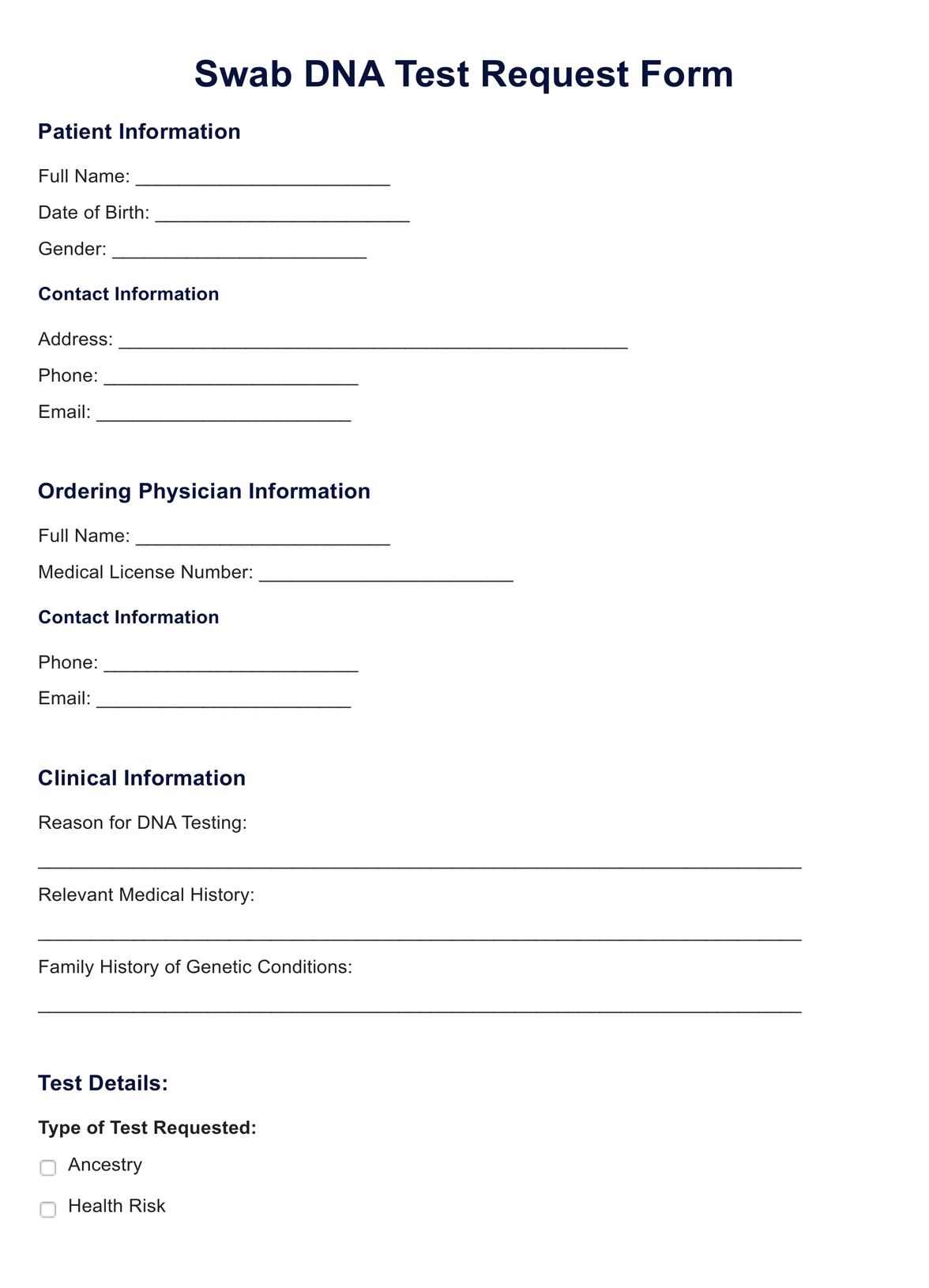DNA tests, such as cheek swabs, are considered accurate and reliable, with accuracy levels comparable to blood samples. The tests can detect genetic mutations and provide information about an individual's genetic makeup, disease risk, and potential response to medications.

Swab DNA Test
Discover the power of your unique DNA with our Swab DNA Test guide. Learn about the saliva sample, collection, and testing process. Download now!
Swab DNA Test Template
Commonly asked questions
The collection process for swab DNA tests, also known as buccal swabs, involves gently rubbing a foam-headed swab against the inside of the cheek to collect a few loose cheek cells and saliva. The swab is then placed on a collection card or in a sealed pouch for transport to a laboratory.
Yes, swab DNA tests are painless and non-invasive. The process involves collecting a small sample of skin cells from the inside of the cheek using a soft brush or cotton swab. There is no need for needles or other invasive procedures, making it a popular choice for various types of genetic testing.
EHR and practice management software
Get started for free
*No credit card required
Free
$0/usd
Unlimited clients
Telehealth
1GB of storage
Client portal text
Automated billing and online payments











